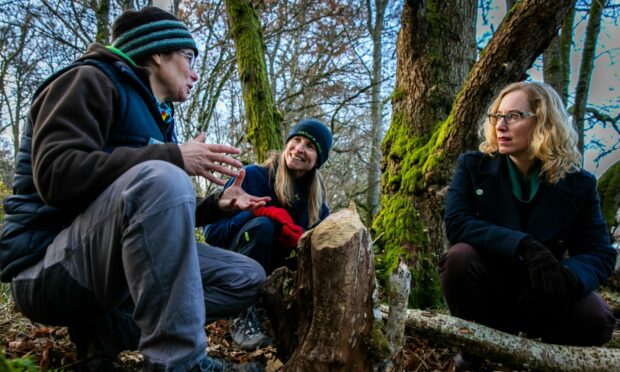Beavers are about to become a much more familiar site across Scotland.
In a landmark announcement, the Scottish Government’s beaver focus is switching from lethal control to relocation.
The chunky semiaquatic rodents – hunted to extinction centuries ago and reintroduced in 2009 – are to be relocated to new parts of Scotland.
Already about to be trialled at Argaty in Perthshire, the approach is aimed at increasing the country’s beaver population.
Beavers are boost for the economy says minister
Scottish biodiversity minister Lorna Slater unveiled the plans at Loch of the Lowes near Dunkeld.
She said beavers were good news for biodiversity and the economy.
“Beavers were hunted to extinction in Scotland and they are now making their recovery.
“Green tourism in Scotland is worth more than £1 billion to the Scottish economy and employs 39,000 people.
“People are so excited about having beavers to come and see, and this is going to be a great boost to Scotland’s economy.”
The minister said funding and support for translocation of beavers was “a key part of the Scottish Greens deal with the Scottish Government”.
Did rewilding campaign influence Scottish Government beaver decision?
However, rewilding campaign Trees for Life pointed out that the announcement came days before a Scottish Parliament committee considered its petition to relocate rather than shoot beavers. The petition collected 16,785 signatures.
Earlier this year Trees for Life also launched a legal challenge against the lethal control of beavers. The Court of Session ruled NatureScot had “erred in law” by not issuing written reasons for granting licences.
And a group of more than 20 prominent environmentalists, academics and commentators recently urged the Scottish Government to allow the release of beavers across Scotland.
Ms Slater said the Trees for Life case “shows how many people in Scotland care about beavers and really want to see nature restored in Scotland”.
Trees for Life’s chief executive Steve Micklewright described the Scottish Government beaver announcement as a “rewilding win”.
“After almost half a millennium, the country is set to welcome beavers back properly at last.
“It’s a wonderful result, 16 months to the day that we launched our campaign for Scotland’s beavers.”
Despite beavers being declared a protected species in 2019, since then more than 200 have been killed under licences issued by NatureScot.
But the nature agency has said killing the animals is now “absolutely a measure of last resort”.
A natural flood defence?
Francesca Osowska, chief executive of NatureScot, said: “Beavers are a great thing for Scotland because they are natural ecosystem engineers.”
She said by creating natural wetlands and pools, beavers encourage a range of species to thrive.
“By increasing that biodiversity we get to see a bigger range of wildlife throughout Scotland.”
She also said the animals could potentially mitigate flooding events.
“By creating these natural wetlands, we begin to slow down watercourses and prevent flooding.
“As we have seen in the past few years, that has been a problem in some parts of Scotland because of the effects of climate change.”
Plans to speed up the Scottish Government beaver relocation process
At the moment, Scotland’s resident beavers are in Tayside and Argyll.
All that is about to change.
The first translocation project is already under way. Beavers causing problems on farmland in Tayside are to be released at Argaty.
Beavers come into conflict with land owners when they cause damage to valuable farmland.
Ms Osowska said: “We’ve got so much information about sites across Scotland where we think beavers would thrive.
“What that means is, if there are some animals that are potentially causing problems for agricultural land, for land managers, farmers and crofters, we’ve now got another tool in the toolbox in terms of being able to manage that conflict.”
She conceded that arranging the translocation licence for Argaty had been a lengthy process.
But she said the Scottish Government beaver plan would be simplified in future to speed things up.
“Moving beavers, translocating any wild animal, is not easy.
“We need to have an approach where there are safeguards in place. And we really tested that with the Argaty licence.
“Through that I hope we can speed up and make the process simpler for future licences.”
She added: “Lethal control licences are absolutely a measure of last resort and by having the powers to move beavers to other areas of Scotland, it means that last resort comes further down the order.”











